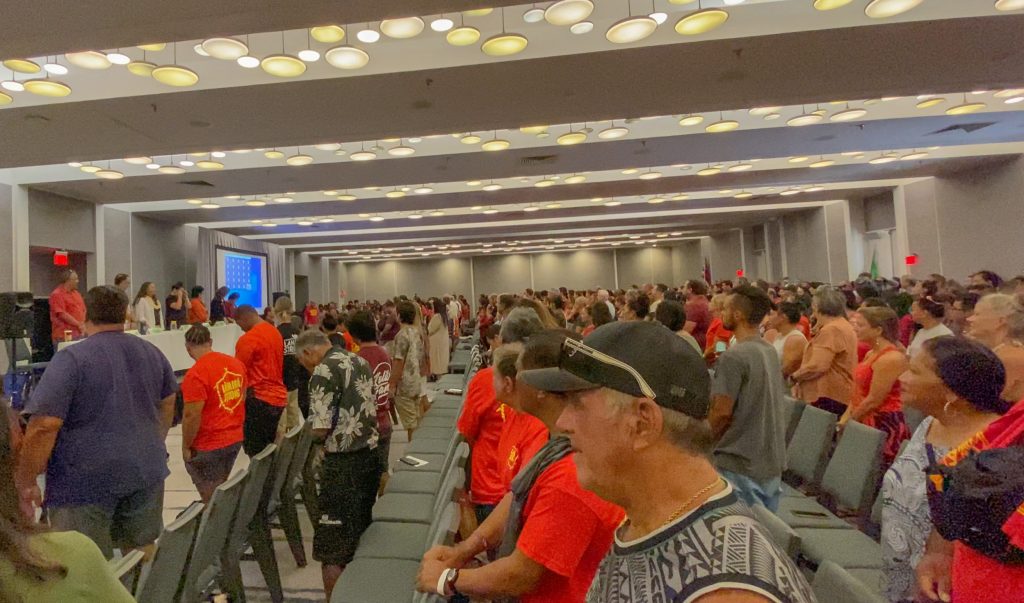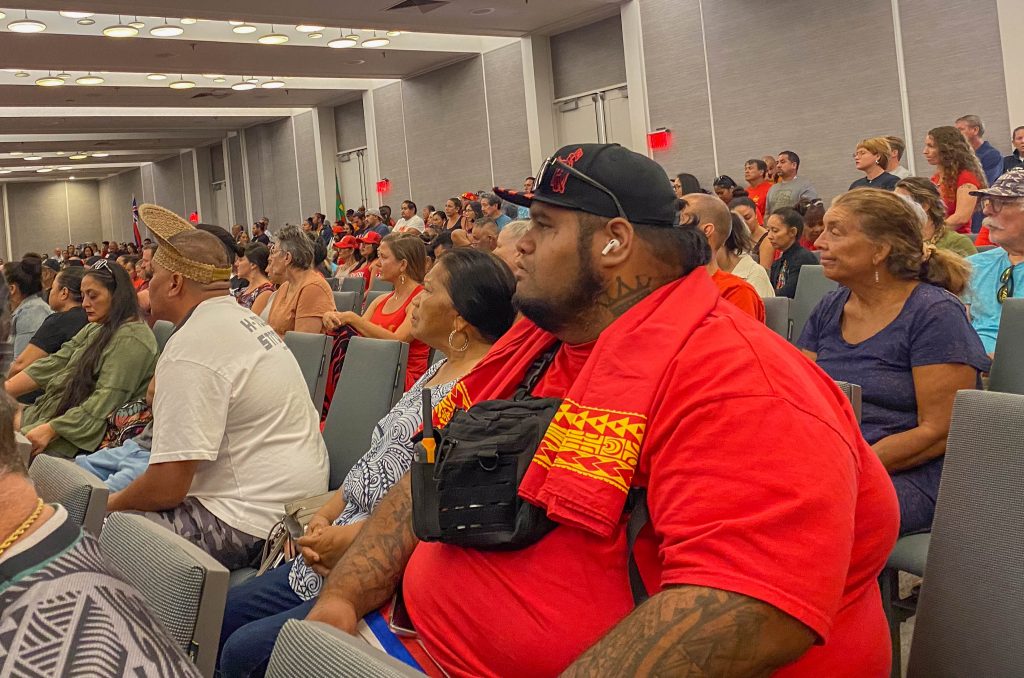Maui County Council listens as Lahaina residents emotionally have their say

They cried in heartbreak. They yelled in anger. They pleaded for help.
They expressed their deep concerns about where they will live, the quality of education for their keiki, and the looming Oct. 8 official return of tourists to West Maui, which they think is way too soon.
They demanded the return of Lahaina’s “stolen” water, the burying of power lines, a moratorium on transient vacation rentals, and time to grieve and heal “before they have to serve mai tais to tourists with a smile.”
They spoke passionately about their vision for a rebuilt Lahaina — which many hope is a return to the days when it was more lush and green, with more agriculture, more access to the shoreline and less dependence on visitors.
On Wednesday, one after another, nearly 150 people from keiki to kūpuna — many who have lost loved ones, homes and businesses in the Aug. 8 fire — testified before the Maui County Council. There was only one agenda item at the council’s committee meeting: Resolution 23-194.
The resolution calls for developing and facilitating, through a series of complementary ordinances and resolutions, a comprehensive recovery and resiliency plan in response to Maui’s tragic wildfires of August 2023.
The Government Relations, Ethics and Transparency committee held it’s first listening session on the resolution last week, with only about 15 people in attendance at the County Council’s chamber in Wailuku.
But during its second listening session on Wednesday, the committee went to West Maui to make it easier for the affected people to attend. And they did.
The meeting began at 9 a.m. with about 800 people packed in a ballroom at The Westin Maui Resort and Spa in Kāʻanapali. It was standing room only, with hundreds more people watching online.
“We’re really looking forward to hearing from you folks [about] your vision for Lahaina in the short term, mid term and long term, and also any solutions and suggestions you have to offer,” Councilmember Tamara Paltin, who represents Lahaina, said at the start of the meeting.
“But if you have to just let it all out and vent whatever is on your heart … that is okay and we are here for you as well.”
The testifiers did indeed provide solutions and suggestions. And, they vented, with several saying they were tired of feeling like second-class citizens and claiming Hawaiʻi Gov. Josh Green and Maui Mayor Richard Bissen cared more about tourists than the residents.
The meeting ended at 9:43 p.m., when no more people wanted to testify or were still up to do so.
No legislative action was taken. This meeting was solely for the council members to listen. The hard work and decisions will come later.
The council members now have a lot to digest from the 10+ hours of oral testimony and 39 written testimonies as of Wednesday evening. People still have the opportunity to provide written testimony by clicking here.
And committee Chair Nohe Uʻu-Hodgins said there would be more opportunities for the public to voice their thoughts, saying: “We will continue to listen.”
On Wednesday, with passion evident and several heartbreaking stories, the council let many people go over the 3-minute time limit.
Fourteen-year-old Heidi Mehlich, a student at Lahainaluna High School, said: “We are all Hawaiians. Together wins. … The world is watching us. Hawaiʻi is the heart of the earth. What a beautiful time to be alive.
“Speaking for the children, we demand good education. Safe education. Education in-person and not online. We ask for a safe school. Health is number one.”
To be safe includes needing at least one more evacuation route for the children, teachers and staff at the three schools up the mountain in Lahaina: Lahainaluna High School, Lahaina Intermediate and Princess Nāhiʻenaʻena Elementary.
“Itʻs just one way in and one way out,” said Kumu Kala. “There needs to be more than one road.”
Myrna Ah Hee, who is in her 60s, said she has lived in Lahaina her entire life: “I do want to see Lahaina kind of the way it was, but with improvements, [better] evacuation routes — all the infrastructure we need to be safe.”
Several people spoke about speeding up the permitting process so Lahaina could rebuild faster.
“Priority. Let us build, let’s go,” said Lonopele Cabinilla.
Brandon Kaina asked for free classes and trainings for local people to be qualified and licensed if they want to clean out the debris on the properties.
“We don’t want to see mainland companies come in when we can employ our people and give them this work opportunity,” he said. “Many of our friends, family and neighbors are skilled craftsmen, engineers and builders who are knowledgeable and experienced.
“So many people are hurting and I think this will help some to heal their wounds to be physically part of the rebuild of Lahaina.”

Alicia Leopoldino agreed with her dad, Lawrence Cabanilla, who said what made Lahaina great was its diversity.
“The people need to come together as one no matter what nationality we are or what culture weʻre from because that is what made Lahaina what it has been and what it will be again,” she said. “I agree Lahaina is not for sale. … We need to come together and rebuild … so we can continue with the uniqueness of the people that make Lahaina what it is.”















